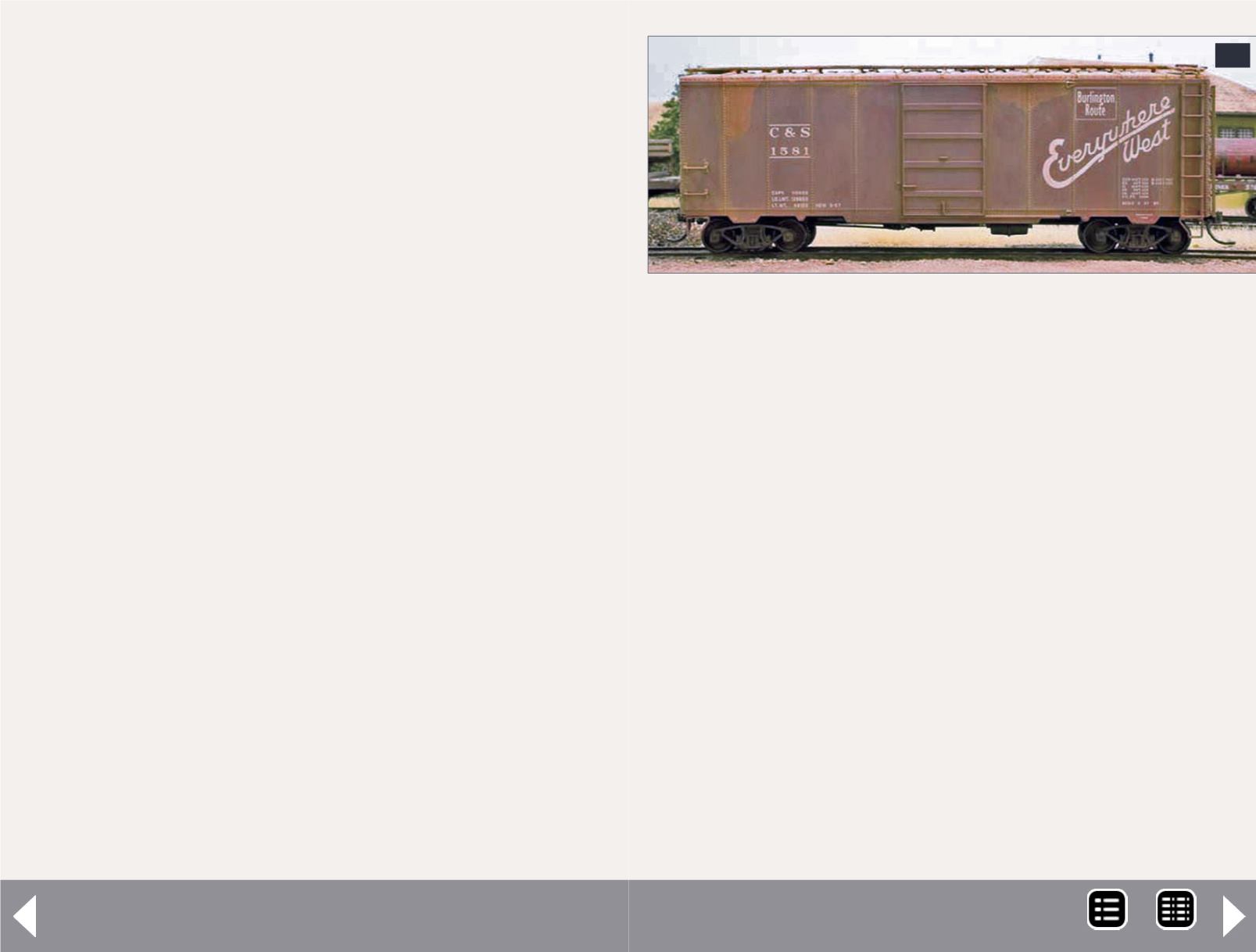
How much is too much?
How much weathering to apply depends on several factors,
including the age of the equipment. era, location, railroad
maintenance practices, etc. Personal taste also plays a part in
this, since everyone has their own idea of the right amount of
weathering. Start with a light weathering application. You can
always add more weathering later if it you decide a car doesn’t
have enough weathering.
Look to the prototype
Looking at some color photos of the prototype can give you a
good idea as to how much weathering to apply, and where to
apply it. Try to use photos of the cars in service, not builders’
photos as your guide, since cars in builders’ photos are brand-
new. There are modelers who have developed a “hobby within
the hobby” focused on weathering. These modelers will go to
great lengths to replicate the exact weathering on a car, as seen
in prototype photographs. By these modelers’ definition, any-
thing not weathered to a prototype photo is known as “fantasy
weathering.” While I don’t go that far, I do follow the practice
of looking to the prototype for inspiration.
Into the light
Weather in the same type of light you use on the lay-
out because colors appear differently under different light
sources. If you use incandescent bulbs, use the same light
bulbs at the workbench to do your weathering, to keep the
colors looking right.
Practice, practice, practice…
Work out the bugs in your technique by practicing on cars
from the scrap bin. Keep at it until you can get reliable results.
Always practice any new techniques on junk cars before tack-
ling nice models.
Batch-building freight cars - 12
Take a chance
Don’t worry about messing up a few cars by weathering them,
every master modeler has some weathering jobs on cars that
didn’t turn out so well. Often the evidence is hidden on a back
siding, or the cars were sold or given away years ago. Most of
mine went to eBay.
Steady as she goes
Strive to keep the coat of weathering material as even as you
can. Avoid blotchy, haphazardly applied weathering by applying
a light even coat and then adding to it.
Three areas to weather
Car underbody, trucks and wheels
Kill the shine and dull any fake plastic-looking parts. Use dark
and dirty colors to simulate grease and grime.
20: This boxcar has a coat of chalk powder over acrylic
washes. The rust spots were painted yellow-orange
and then given a coat of Rustall over them to create a
rough texture.
20
MRH-Mar 2014


